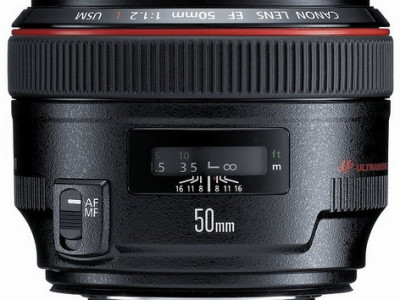Canon EF 50mm f1.2L USM review
-
-
Written by Gordon Laing
Quality
Canon EF 50mm f1.2L USM quality (full-frame)
To evaluate the real-life performance of the Canon EF 50mm f1.2L USM lens, I shot this landscape scene at every aperture setting using a Canon EOS 5D Mark III mounted on a tripod.
The Mark III was set to 100 ISO and the lens focused on the center of the composition using magnified Live View assistance. Most of the scene is effectively at infinity so even at f1.2 the depth of field covers the range of distances from top to bottom.
The full-frame Mark III allows us to compare the sharpness across the entire frame from the extreme corners to the center; by taking a carefully measured crop, we can also simulate the corner performance when mounted on a camera with a smaller APS-C sensor.
I shot the scene in RAW and processed the files in Adobe Camera RAW using sharpening at 70 / 0.5 / 36 / 10, Luminance and Colour Noise Reduction both set to zero, and the Process to 2012 with the Adobe Standard profile; meanwhile the White Balance was manually set to 5500K. The high degree of sharpening with a small radius enhances the finest details without causing undesirable artefacts. I also switched off all lens corrections to reveal vignetting, chromatic aberrations and geometric distortions – everything you see here is uncorrected. I’m presenting these results over three pages: corner sharpness on full-frame (on this page below), corner sharpness on APS-C, and center sharpness. I also have a fourth and fifth page illustrating and comparing the depth of field and bokeh quality – you can jump to any of these from the index above right. Now it’s time to discuss the results on this page, below, for the corner sharpness on full-frame cameras.
The image above right shows the full-frame area with three red rectangles representing the cropped areas on each results page. The crops presented on this page were taken from the red rectangle in the bottom left corner, so indicate the performance in the corner of a full-frame image.
The EF 50mm f1.2L USM is all about achieving the shallowest possible depth of field with sharp details in the middle of the frame. The trade-off is significant softness, vignetting and coma in the corners of the full-frame when the aperture is open.
Close the aperture to f2 and you’ll find much of the vignetting and coma reduced, but the details remain quite soft. As the aperture closes further, the sharpness gradually improves, but you’ll need to close it down to f8 before it’s looking good in the full-frame corners. As you’ll discover from my Canon 50mm comparison pages though, you can achieve a much sharper result in the corners with the cheaper 50mm lenses. So don’t buy the 50mm f1.2L USM believing you’ll enjoy sharp details across the full-frame – it’s not bad when closed to f8, but there are better choices if fine details corner-to-corner are what you desire. Now let’s see how much the situation improves on the more forgiving cropped frame in my Canon 50mm f1.2 APS-C sharpness.
Canon EF 50mm f1.2L USM Corner (full-frame) |
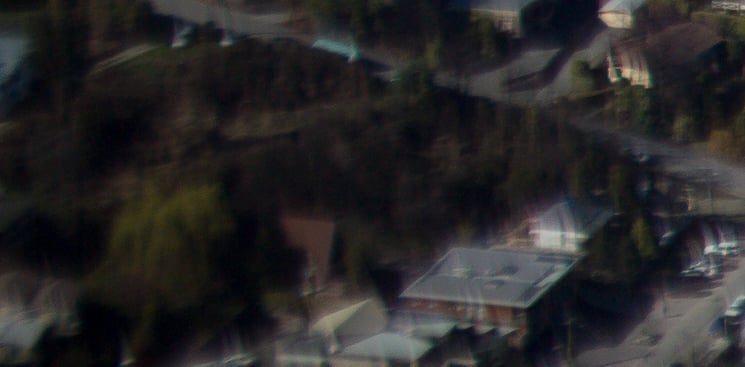 |
f1.2 corner (full-frame) |
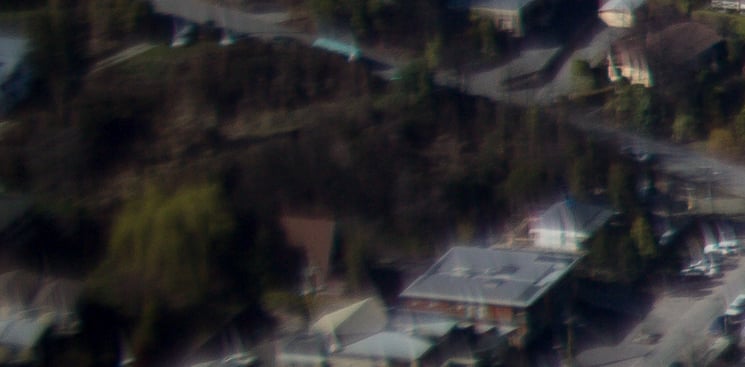 |
f1.4 corner (full-frame) |
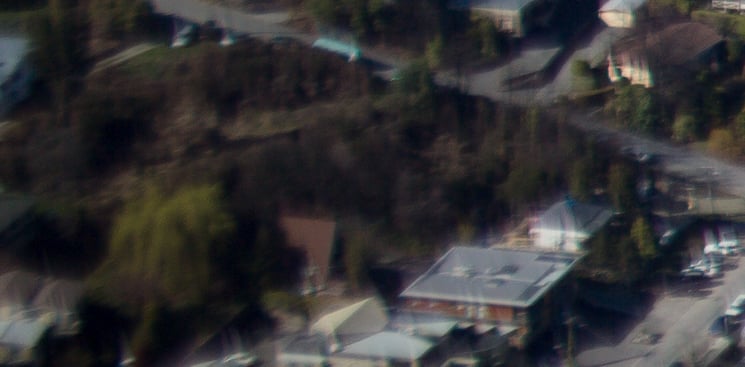 |
f1.8 corner (full-frame) |
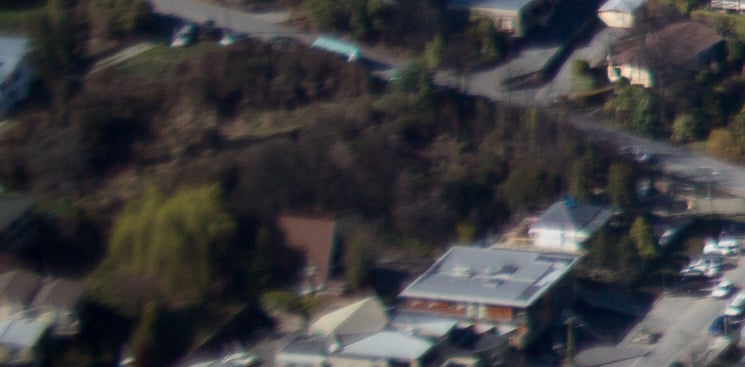 |
f2 corner (full-frame) |
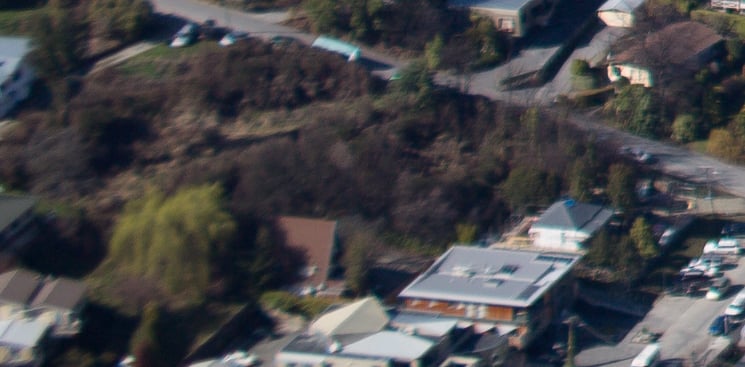 |
f2.8 corner (full-frame) |
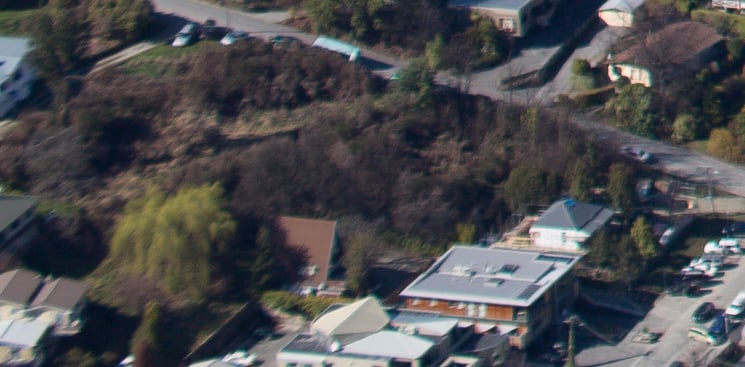 |
f4 corner (full-frame) |
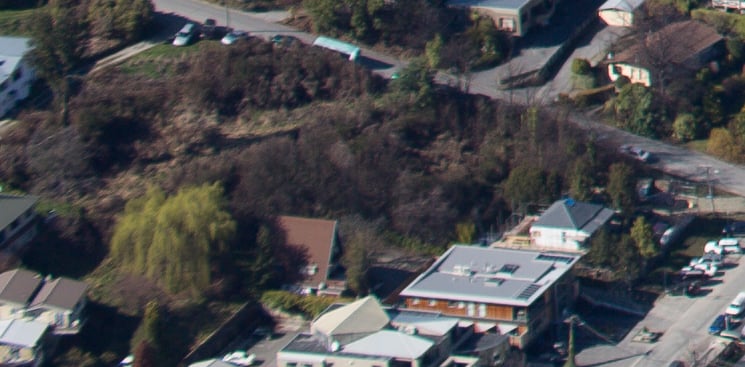 |
f5.6 corner (full-frame) |
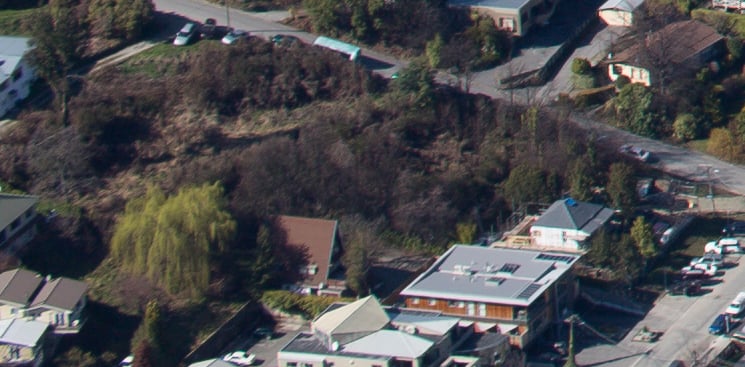 |
f8 corner (full-frame) |
Canon EF 50mm f1.2L USM quality (APS-C)
To evaluate the real-life performance of the Canon EF 50mm f1.2L USM lens, I shot this landscape scene at every aperture setting using a Canon EOS 5D Mark III mounted on a tripod.
The Mark III was set to 100 ISO and the lens focused on the center of the composition using magnified Live View assistance. Most of the scene is effectively at infinity so even at f1.2 the depth of field covers the range of distances from top to bottom.
The full-frame Mark III allows us to compare the sharpness across the entire frame from the extreme corners to the center; by taking a carefully measured crop, we can also simulate the corner performance when mounted on a camera with a smaller APS-C sensor.
I shot the scene in RAW and processed the files in Adobe Camera RAW using sharpening at 70 / 0.5 / 36 / 10, Luminance and Colour Noise Reduction both set to zero, and the Process to 2012 with the Adobe Standard profile; meanwhile the White Balance was manually set to 5500K. The high degree of sharpening with a small radius enhances the finest details without causing undesirable artefacts. I also switched off all lens corrections to reveal vignetting, chromatic aberrations and geometric distortions – everything you see here is uncorrected. I’m presenting these results over three pages: corner sharpness on full-frame, corner sharpness on APS-C (on this page below), and center sharpness. I also have a fourth and fifth page illustrating and comparing the depth of field and bokeh quality – you can jump to any of these from the index above right. Now it’s time to discuss the results on this page, below, for the corner sharpness on APS-C cropped-frame cameras.
The image above right shows the full-frame area with three red rectangles representing the cropped areas on each results page. The crops presented on this page were taken from the second red rectangle in-between those in the corner and middle, so indicate the performance in the corner of an APS-C crop-frame image.
The EF 50mm f1.2L USM greatly benefits form the more forgiving smaller APS-C sensor size, avoiding much of the vignetting and coma that’s present in the corner of full-frame images. That said, sharpness is still an issue, and even on the smaller APS-C frame you’ll need to close this lens down for the sharpest results in the corners.
As you close the aperture, the sharpness gradually improves, but doesn’t start looking good until you reach f4. At this point the extreme corners are still a little soft on the APS-C frame, but it’s not a bad result. Close the lens to f5.6 though and the situation greatly improves, with a further small refinement at f8.
So the 50mm f1.2L USM is capable of delivering corner-to-corner sharpness on the APS-C frame, but you’ll need to close it to f5.6 or ideally f8. Now let’s see how it performs in the middle of the frame in my Canon 50mm f1.2 center sharpness results.
Canon EF 50mm f1.2L USM Corner (APS-C cropped frame) |
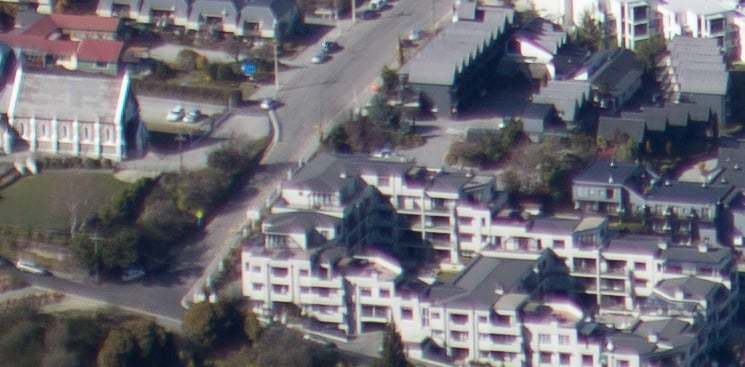 |
f1.2 corner (APS-C) |
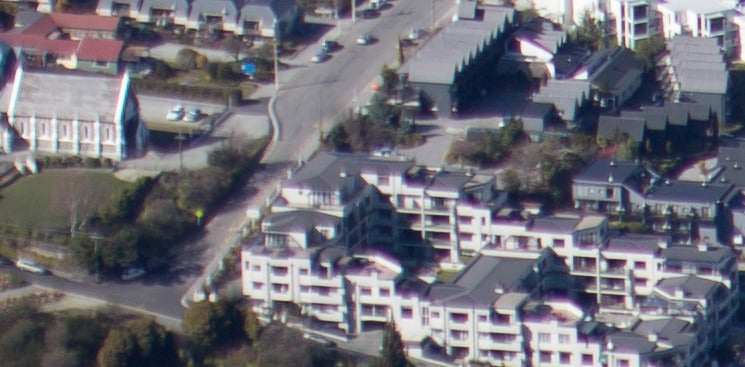 |
f1.4 corner (APS-C) |
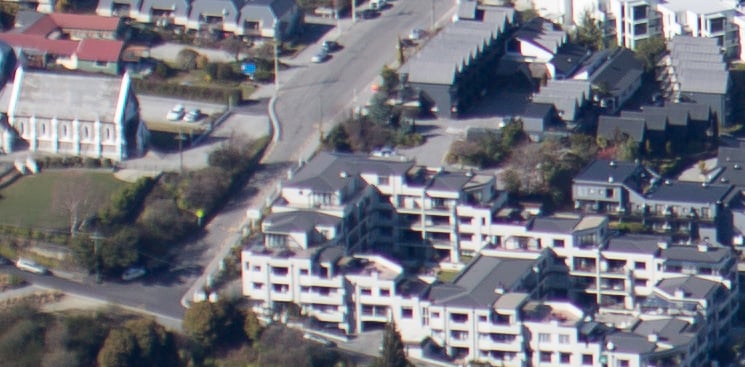 |
f1.8 corner (APS-C) |
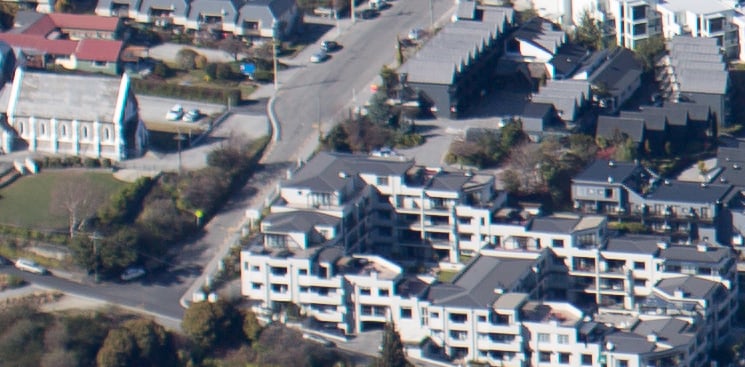 |
f2 corner (APS-C) |
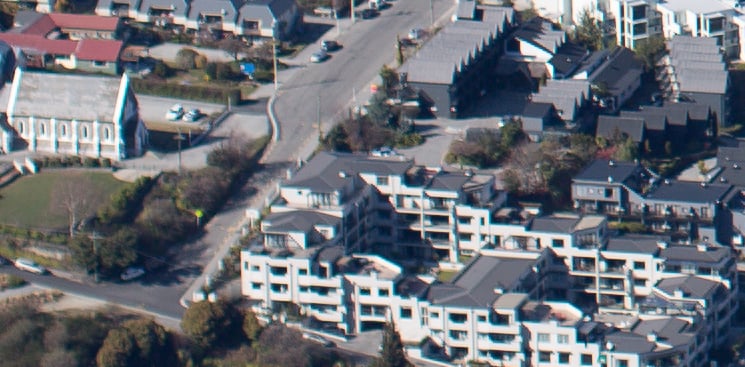 |
f2.8 corner (APS-C) |
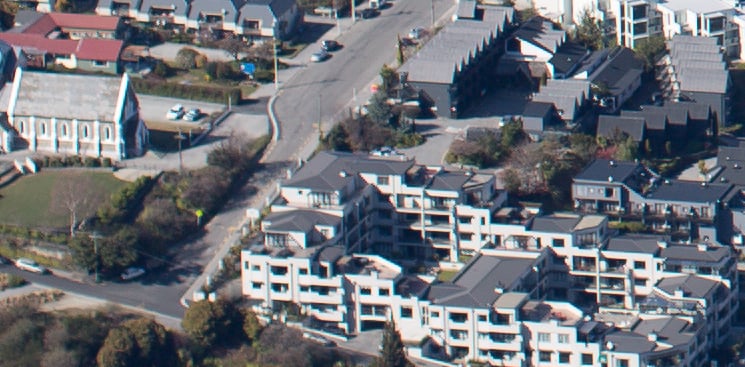 |
f4 corner (APS-C) |
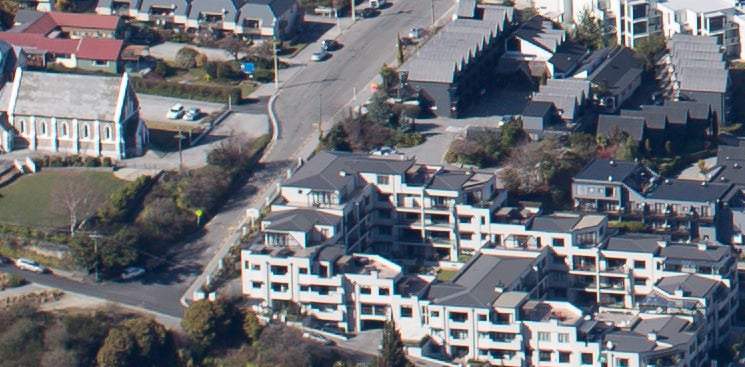 |
f5.6 corner (APS-C) |
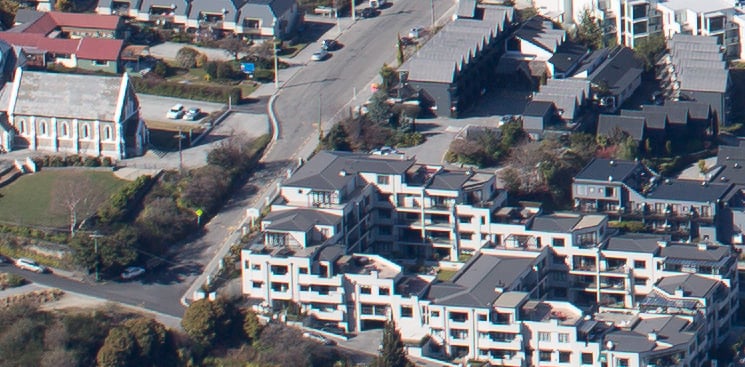 |
f8 corner (APS-C) |
Canon EF 50mm f1.2L USM quality centre
To evaluate the real-life performance of the Canon EF 50mm f1.2L USM lens, I shot this landscape scene at every aperture setting using a Canon EOS 5D Mark III mounted on a tripod.
The Mark III was set to 100 ISO and the lens focused on the center of the composition using magnified Live View assistance. Most of the scene is effectively at infinity so even at f1.2 the depth of field covers the range of distances from top to bottom.
The full-frame Mark III allows us to compare the sharpness across the entire frame from the extreme corners to the center; by taking a carefully measured crop, we can also simulate the corner performance when mounted on a camera with a smaller APS-C sensor.
I shot the scene in RAW and processed the files in Adobe Camera RAW using sharpening at 70 / 0.5 / 36 / 10, Luminance and Colour Noise Reduction both set to zero, and the Process to 2012 with the Adobe Standard profile; meanwhile the White Balance was manually set to 5500K. The high degree of sharpening with a small radius enhances the finest details without causing undesirable artefacts. I also switched off all lens corrections to reveal vignetting, chromatic aberrations and geometric distortions – everything you see here is uncorrected. I’m presenting these results over three pages: corner sharpness on full-frame, corner sharpness on APS-C, and center sharpness (on this page below). I also have a fourth and fifth page illustrating and comparing the depth of field and bokeh quality – you can jump to any of these from the index above right. Now it’s time to discuss the results on this page, below, for the center sharpness.
The image above right shows the full-frame area with three red rectangles representing the cropped areas on each results page. The crops presented on this page were taken from the red rectangle in the middle, so indicate the performance in the center of the frame.
The EF 50mm f1.2L USM is all about delivering sharp portrait details with a blurred background, so concentrates its performance in the middle of the frame. As you can see here even with the aperture opened completely to f1.2, the sharpness is very good in the middle of the frame. The only complaints are reduced contrast and a little coloured fringing, both of which are easily correctable on RAW files.
These minor issues quickly reduce at f1.4 and f1.8 and are virtually gone by f2. I’d say the maximum sharpness and contrast in the middle of the frame are achieved somewhere between f2 and f2.8, and beyond this point there’s no much point closing the aperture further unless you want a larger depth of field, longer exposures, or of course equally sharp results in the corners too.
Following the disappointing performance in the full-frame corners, this page will come as some relief to owners or potential owners of this lens. Remember the EF 50mm f1.2L USM is not about having sharp corners – indeed quite the opposite. Most of the time any detail in the corners will be lost to a shallow depth of field, and what matters is how smooth those blurred portions look and how sharp it looks in the middle on the all-important subject. We now know there’s no problems with the center performance, which only leaves the quality of the out-of-focus effects. Check them out in my Canon 50mm f1.2 bokeh results.
Canon EF 50mm f1.2L USM Centre
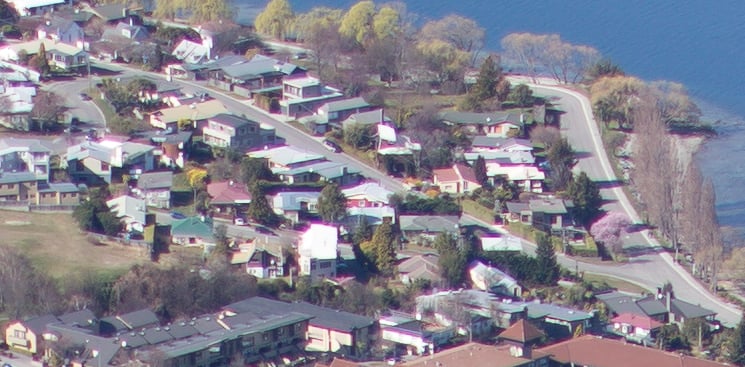 |
f1.2 centre |
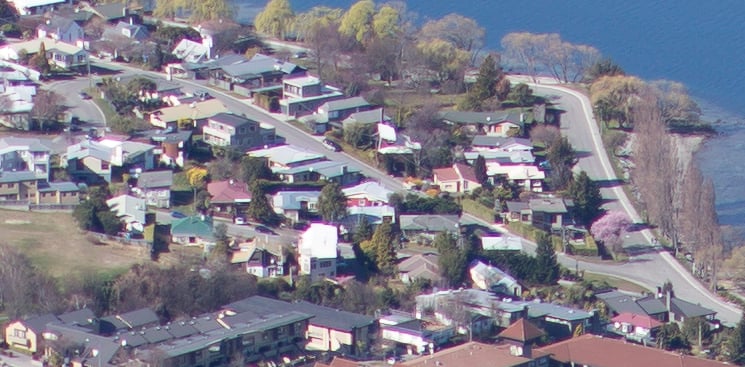 |
f1.4 centre |
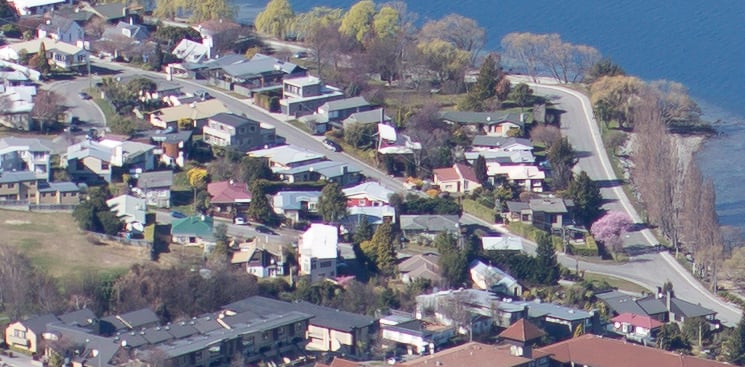 |
f1.8 centre |
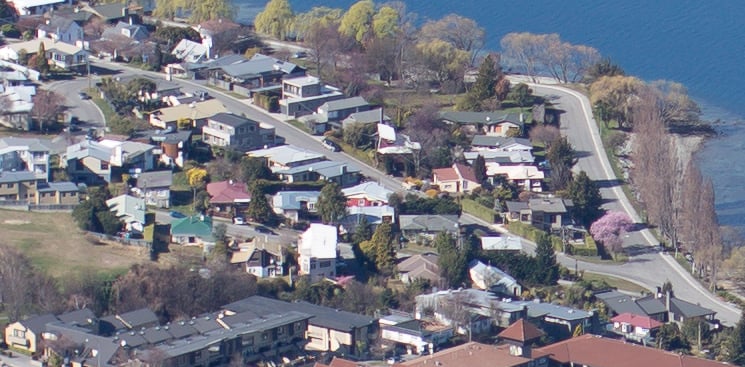 |
f2 centre |
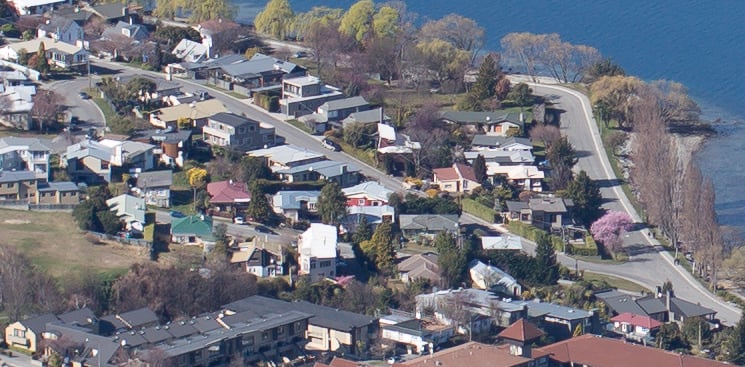 |
f2.8 centre |
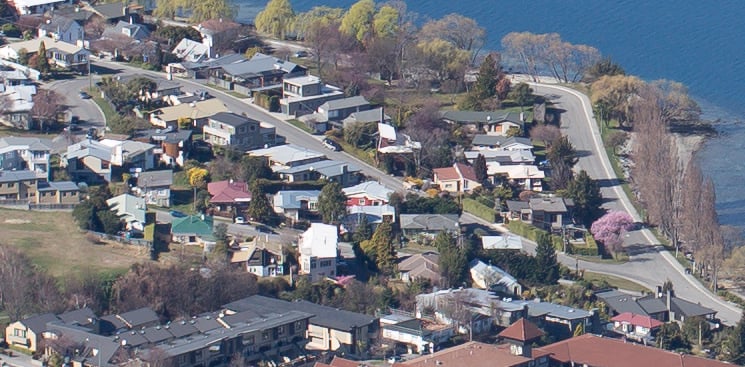 |
f4 centre |
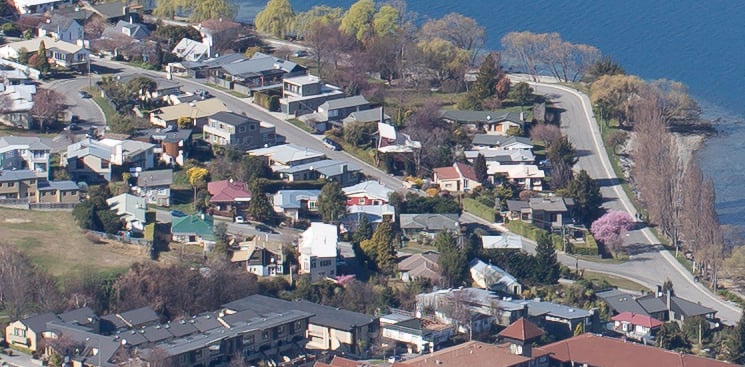 |
f5.6 centre |
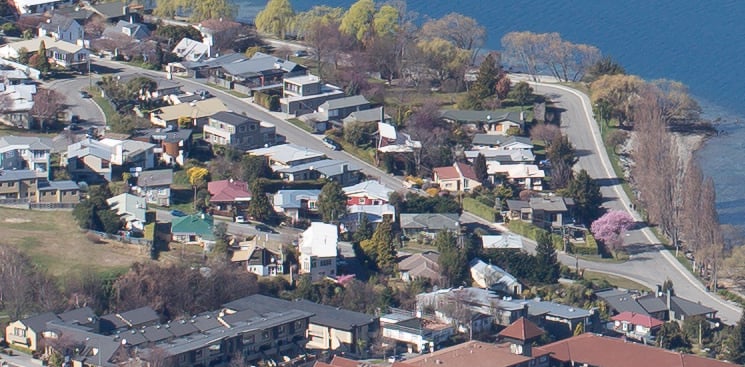 |
f8 centre |
Canon EF 50mm f1.2L USM bokeh (full-frame)
To compare the depth-of-field and bokeh quality of the Canon EF 50mm f1.2 under real-life conditions, I shot this still life scene at every aperture setting within a few moments of each other, using a Canon EOS 5D Mark III mounted on a tripod. The Mark III was set to 100 ISO and the lens focused on the napkin tied around the glass using magnified Live View assistance. The image opposite shows the full composition, while the images below at each aperture show the full width of the frame, reduced to fit the page width and cropped a little vertically. Note there was some movement in the background between some frames, so I’ve concentrated my comparisons and comments on the portions of the frame which have remained consistent. You can see a comparison between all three Canon 50mm lenses on the next page!
The Canon EF 50mm f1.2L USM is all about achieving the shallowest possible depth of field, and as the images below prove, you can enjoy a razor thin plane of sharp focus with this lens with the aperture fully-opened. At f1.2, barely anything in front or behind the napkin is in focus, and even much of the small plate is quite blurred, let alone the dominoes and their wooden box behind it. It’s clear the f1.4 and f1.8 versions, while still showing a very shallow depth of field, are noticeably better defined than the f1.2 version, proving there really is a benefit to a lens with this aperture if you’re into the maximum blurring effect.
But it’s not just about achieving the shallowest possible depth of field. The quality of the out-of-focus areas, also known as the bokeh, is an important factor of any large aperture lens. This is where the Canon EF 50mm f1.2L USM really scores as the out-of-focus areas look particularly smooth and creamy with no undesirable artefacts to mention.
This may sound a little odd if you’ve not paid close attention to the blurred parts of an image before, but different lenses can render these areas quite differently from each other, and some can look messier or more complicated than others. The ideal is smooth blurring with no distractions, allowing the subject to really stand out against the background, and this is where the Canon EF 50mm f1.2L USM justifies its price for bokeh fanatics.
Of course like many high-end goods, the difference can be subtle and some photographers may not need it or even be able to notice it. What you really want to see at this point is how the effect compares against the cheaper models, and I can show you just that in my Canon 50mm bokeh comparison!
Canon EF 50mm f1.2L USM Depth-of-field (full-frame width, cropped vertically) |
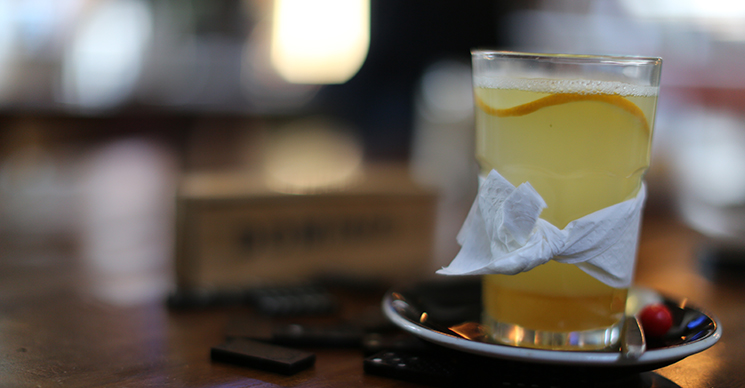 |
f1.2 (full-frame width, cropped vertically) |
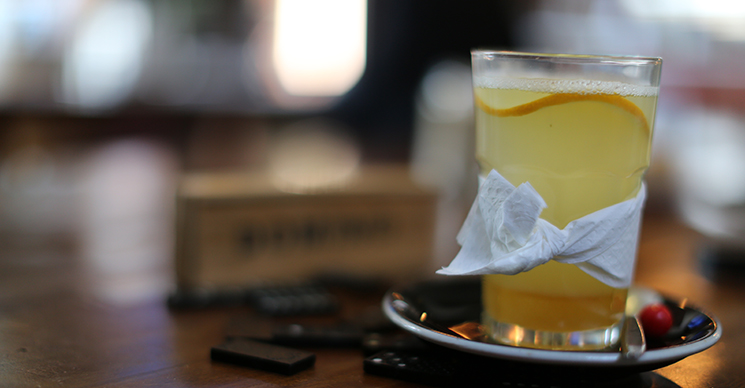 |
f1.4 (full-frame width, cropped vertically) |
 |
f1.8 (full-frame width, cropped vertically) |
 |
f2 (full-frame width, cropped vertically) |
 |
f2.5 (full-frame width, cropped vertically) |
 |
f2.8 (full-frame width, cropped vertically) |
Canon 50mm bokeh comparison (full-frame)
To compare the depth-of-field and bokeh quality of the three Canon EF 50mm lenses under real-life conditions, I shot this still life scene with each lens at every aperture setting within a few moments of each other, using a Canon EOS 5D Mark III mounted on a tripod. The Mark III was set to 100 ISO and the lenses focused on the napkin tied around the glass using magnified Live View assistance. The image opposite shows the full composition, while the images below at each aperture show a cropped area of the frame, marked by the red square and reduced to fit the page. Note there was some movement in the background between some frames, so I’ve concentrated my comparisons and comments on the portions of the frame which have remained consistent.
While there are differences in focusing, build and optical quality between the three Canon EF 50mm lenses, arguably the two most important factors when choosing one of them is the aperture and the price. This especially applies to the top-end EF 50mm f1.2L USM which is considerably more expensive than the f1.4 version. Yes it’s the only one of the three with the L badge, but how much difference is there between f1.2 and f1.4?
Technically it’s easy to calculate the light gathering difference between f1.2 and f1.4 is half a stop, with a further two thirds of a stop between f1.4 and f1.8. These all help when shooting in very low light, but I think the thing most of us want to know is what impact do they have on the depth of field. Just how much shallower is f1.2 than f1.4 and f1.8? And crucially, when all are set to the same focal ratio, will they deliver the same quality result? Let’s find out on this page!
The crops below are taken from the area marked by the red square and reduced in size to fit the page. As noted earlier, there was some motion in the background between the shots in the test, so I’ll concentrate on comparing the elements which are consistent. The EF 50mm f1.2L USM kicks off the sequence at f1.2 with a very shallow depth of field and silky smooth out of focus effects. It looks great, but it’s only at f1.4 that we can compare it against the next alternative. Here you’ll see a very interesting effect: technically both lenses share the same depth of field, but the blurring looks subtly different. The EF 50mm f1.4 USM’s blurred areas look more defined than those on the EF 50mm f1.2L USM and less smooth at the edges.
At f1.8, the thrifty-fifty can join-in with a proper three-way comparison, and again while all three are delivering the same depth of field, the out-of-focus effects again look different. Try to ignore the big light source at the top of the frame which has moved between the shots, but do look at the dominoes, their wooden box and the shape to the immediate left of the glass (a salt shaker as I recall). As we saw at f1.4, the EF 50mm f1.2L USM is delivering nicer-looking blurring that’s less defined than the f1.4 lens, which in turn is less defined than the cheapest f1.8 lens.
This may be a surprising result if you’d never compared the quality of out-of-focus effects before, also known as the bokeh. You may assume when two lenses with the same focal length are set to the same aperture (with the same camera, same subject distance and same focusing point), that they would deliver the same out-of-focus effects, but this clearly isn’t the case. The out-of-focus effects on the EF 50mm f1.2L USM are consistently less defined than the EF 50mm f1.4 USM and EF 50mm f1.8 II when all three are set to the same aperture – at least until around f2.8. With only five diaphragm blades, some out-of-focus areas on the EF 50mm f1.8 II will also be rendered into pentagon shapes as oppose to the more rounded shapes of the f1.4 and f1.2 versions which both sport eight blades.
Beyond f2.8, any differences between the out-of-focus effects become less significant, so if you regularly shoot at smaller apertures (bigger f-numbers) there’s little justification to go for one of the pricier versions in this test. But just one stop brighter at f2 there’s visible differences between them that bokeh fanatics will appreciate.
And it’s those fanatics who’ll fawn over the results at the even larger apertures. At f1.8 and f1.4, the EF 50mm f1.2L USM delivers nicer-looking results than its more affordable counterparts, and at f1.2 it’ll deliver a razor thin plane of focus with everything in front and behind rendered into satisfying creaminess. If you’re really into portrait and wedding photography, the EF 50mm f1.2L USM could easily justify its price by delivering results at large apertures which just can’t be matched by cheaper lenses. Macro and product photographers will also appreciate these qualities, but there’s better choices for them if their subjects are small.
But we are talking about subtle differences in quality here with a very big difference in price. The EF 50mm f1.4 USM still delivers a very shallow depth-of-field with pleasant out-of-focus effects at a fraction of the price of the EF f1.2L USM. Meanwhile the EF 50mm 1.8 II may be the least creamy of the threesome in terms of bokeh quality, and can also render some out-of-focus areas as pentagons due to its five diaphragm blades, but it can still deliver a very shallow depth-of-field at a very low price – a killer combination which has made it Canon’s best-selling prime lens. And lest we forget, the EF 50mm f1.8 II actually delivered a sharper result across the entire frame at larger apertures than the EF 50mm f1.2L USM in my distant landscape tests.
Canon EF 50mm f1.8 II | Canon EF 50mm f1.4 USM | Canon EF 50mm f1.2L USM | ||
Canon EF 50mm f1.8 II | Canon EF 50mm f1.4 USM | Canon EF 50mm f1.2L USM | ||
 | ||||
f1.2 not available | f1.2 not available | f1.2 centre | ||
 |  | |||
f1.4 not available | f1.4 centre | f1.4 centre | ||
 |  |  | ||
f1.8 centre | f1.8 centre | f1.8 centre | ||
 |  |  | ||
f2 centre | f2 centre | f2 centre | ||
 |  |  | ||
f2.5 centre | f2.5 centre | f2.5 centre | ||
 |  |  | ||
f2.8 centre | f2.8 centre | f2.8 centre |




